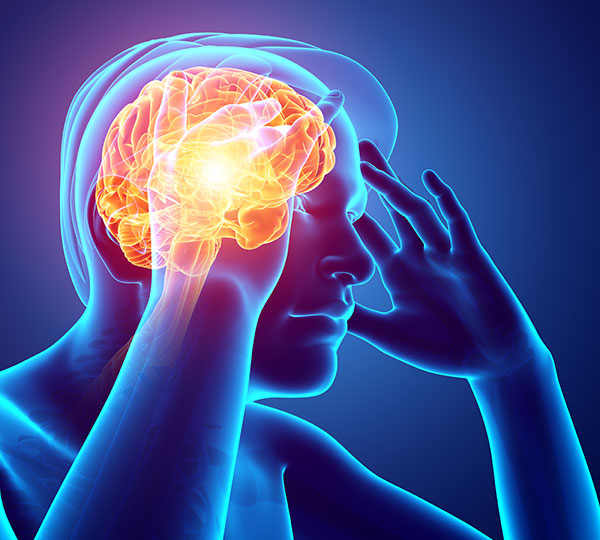Headaches
Headaches or Cephalgia are defined as discomfort or pain in the head or face. It is second only to the common cold as the most common reason people in the U.S. seek medical attention. Headache pain can range from very mild to so severe that sufferer is totally impaired. Over 100 million people in the U.S. suffer from frequent headaches, with 40% of this group suffering from migrainous headaches. Over 80% of females and 65% of males in developed countries suffer from Tension Headaches. Approximately 5% of adults suffer from chronic daily headaches. Even though the pain and impairment from headaches can be severe, most headaches are benign, not life-threatening or a serious medical condition.
The following are red flags or warning signs that one should seek immediate medical evaluation:
- Sudden Increase In Headache Frequency and/or Severity
- Occur Daily
- Pain Characteristic Described as a "Thunderclap" or "Jolt"
- Pain Begins After Age 50
- Worsening Change in the Pattern and/or Nature of the Headache
- Mental Confusion or Seizure That Accompanies Pain
- Fever
- Significant Rise in Blood Pressure
- Stiffness of the Neck and/or Spine
- Vision Changes
- Muscle Weakness and/or Loss of Coordination
- Fainting or Loss of Consciousness
- Loss of Sensation (numbness)
Most headaches begin in the vast network of sensory nerves (Trigeminal Nerve System) which innervate the scalp, posterior neck, face, mouth, teeth, nose, sinuses, ears and throat. Headaches can also originate in the blood vessels of the brain or in the muscles, tendons, ligaments and connective tissue of the head and neck. Headaches can be serious or life-threatening when the pain is a sign or symptom of an underlying serious disorder or disease, such as a stroke, aneurysm, infection or tumor.
Headaches can be classified into two groups — primary and secondary. Primary headaches are classified as a single disorder independent of another condition. Secondary headaches are a symptom or result of another disorder, injury, ingested substance or disease.
- Migraine
- Tension-type
- Trigeminal Automatic Cephalgias
- Other
- Post-traumatic
- Cranial or Cervical Disorder (Vascular)
- Cranial or Cervical Disorder (Non-Vascular)
- Substance Induced or Substance Withdrawls
- Infection
- Disorder of Homeostasis
- Facial Pain from Disorder of Cranium
- Psychiatric Disorder

